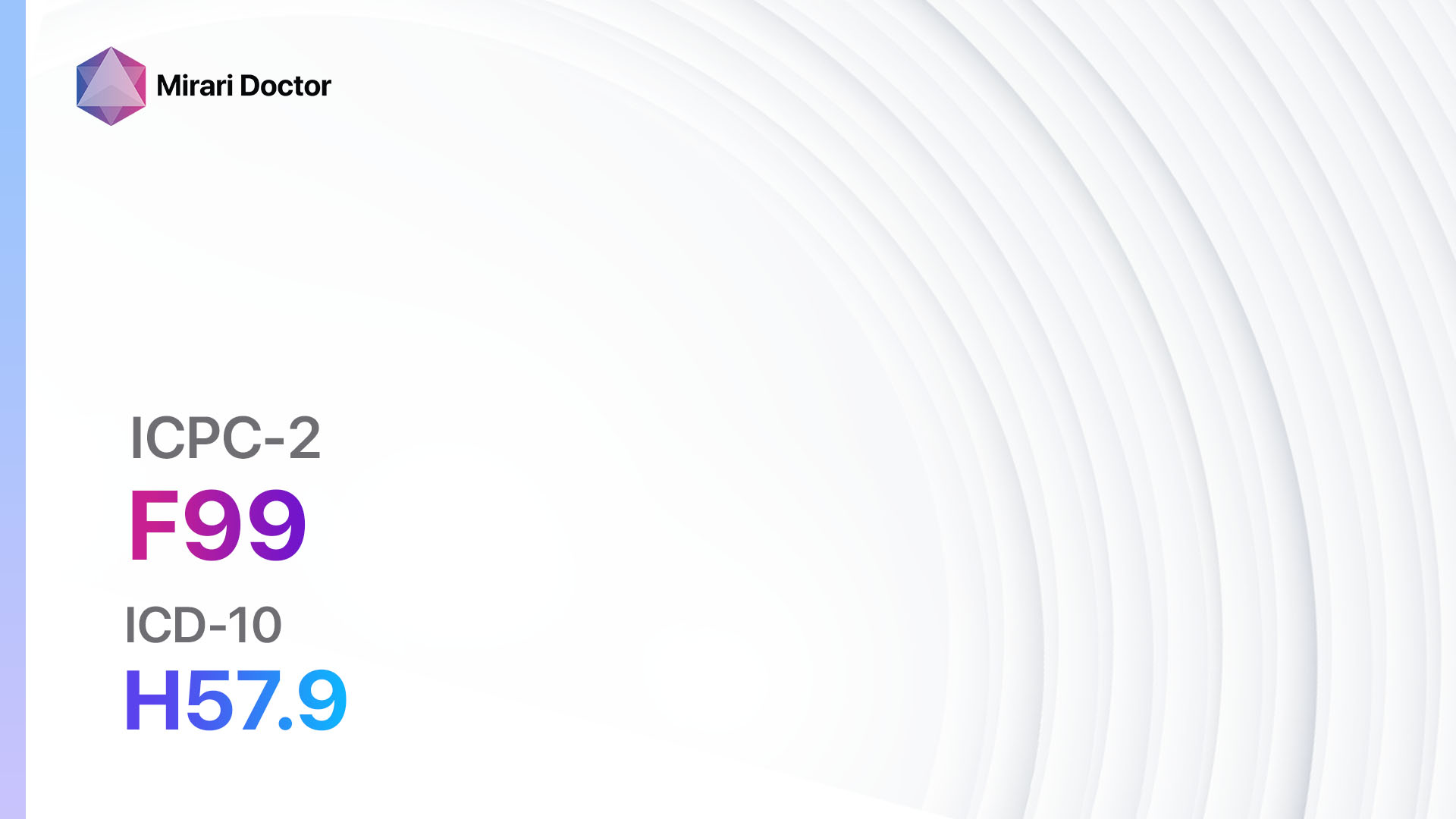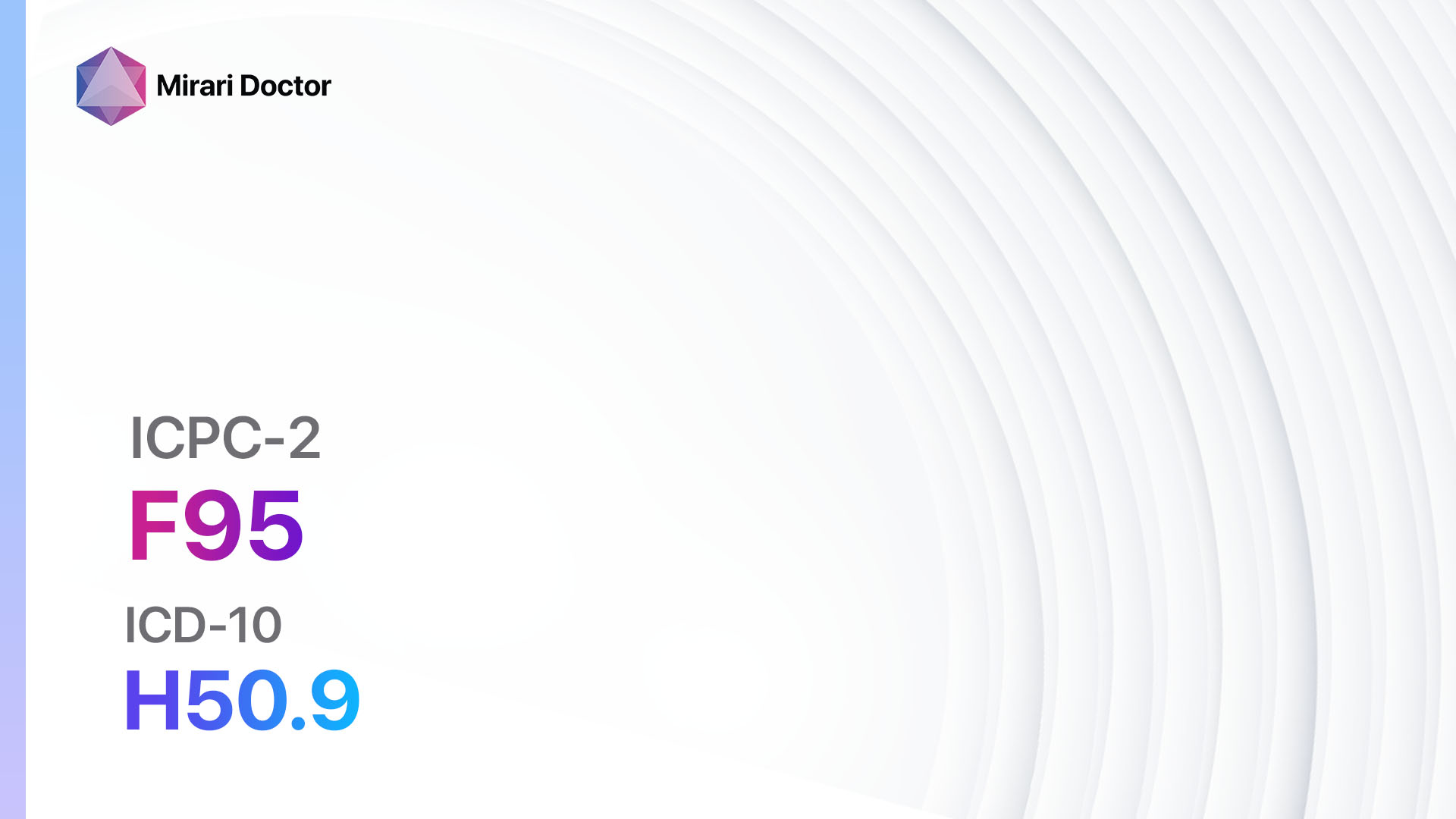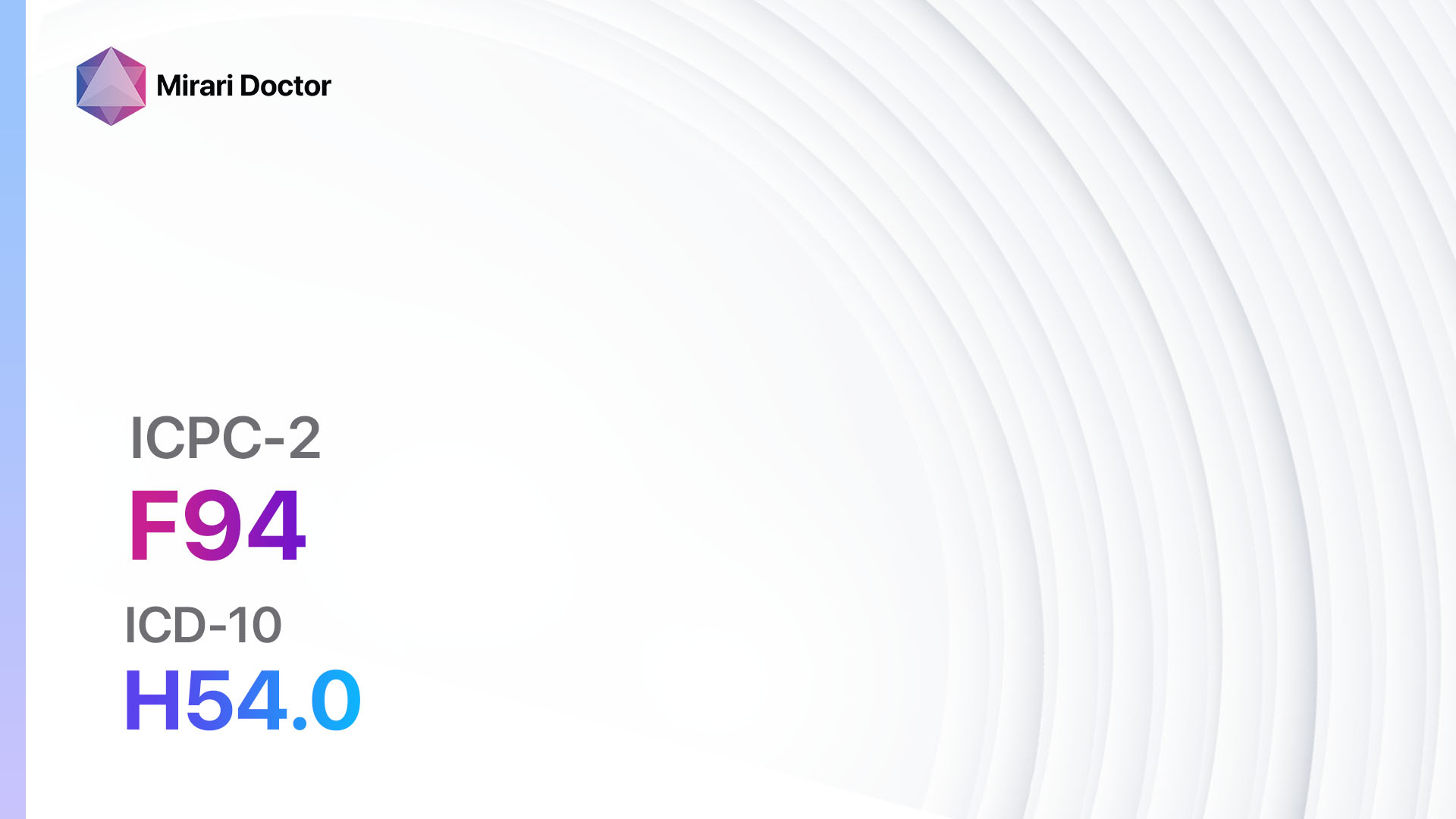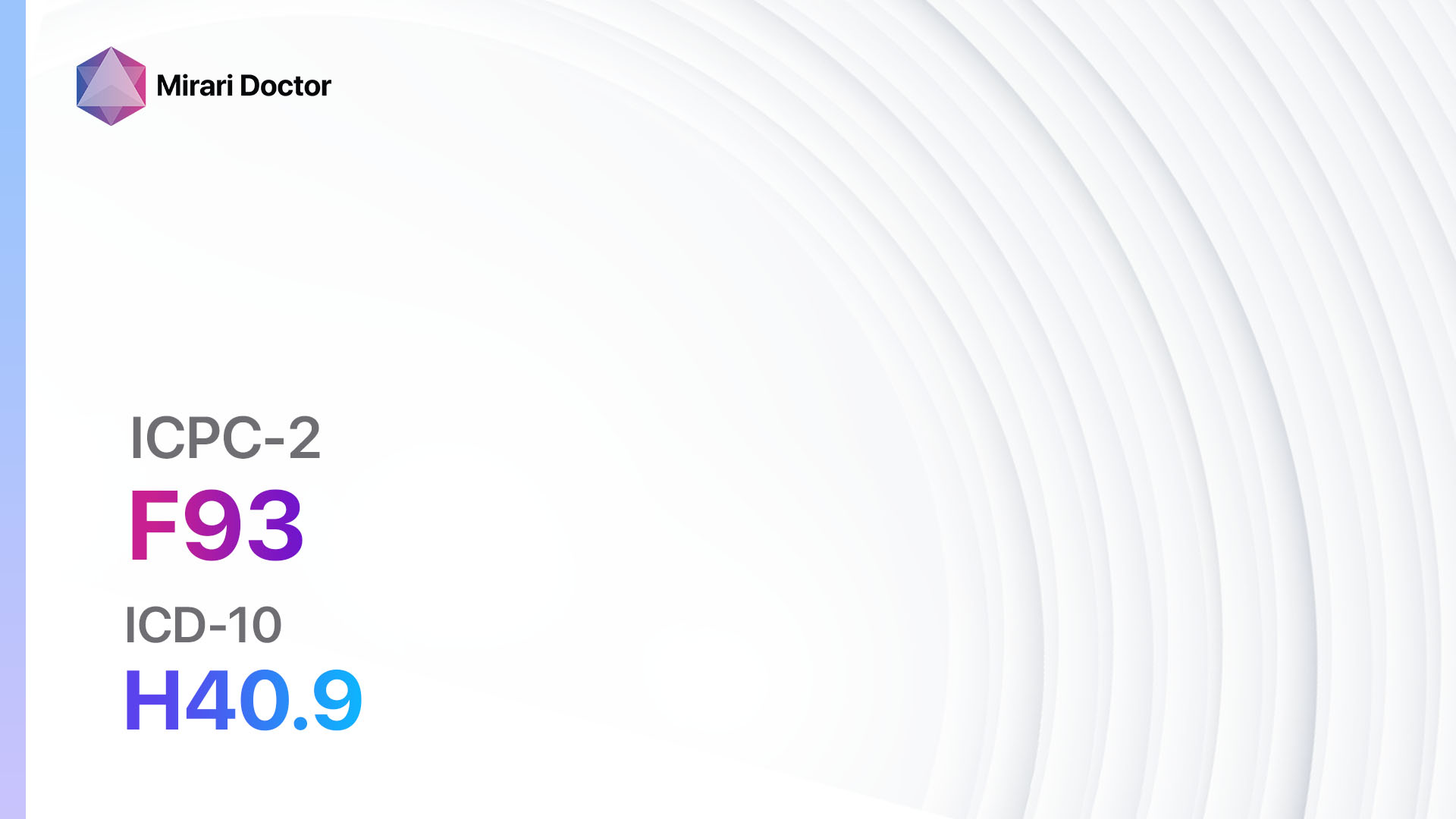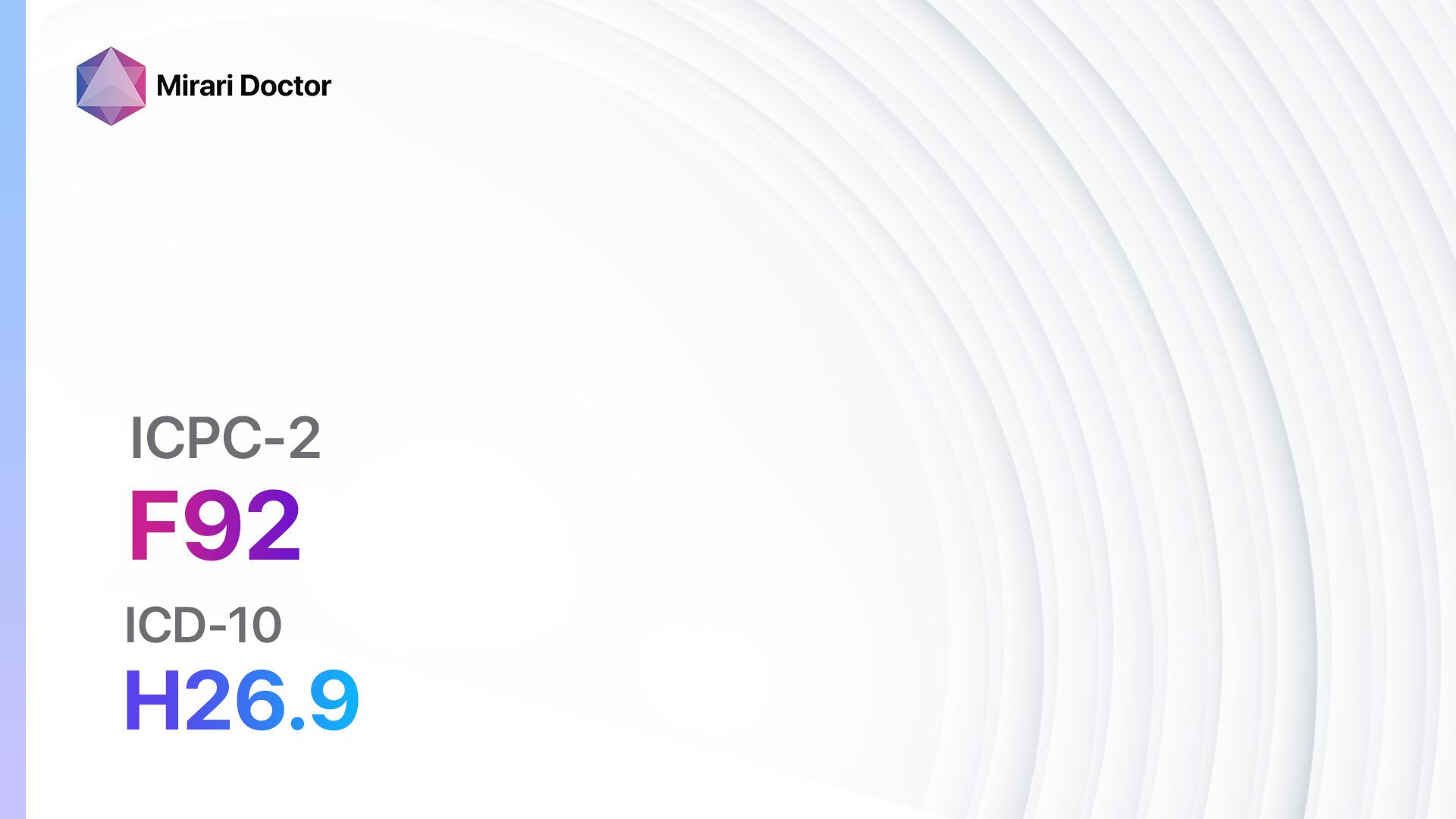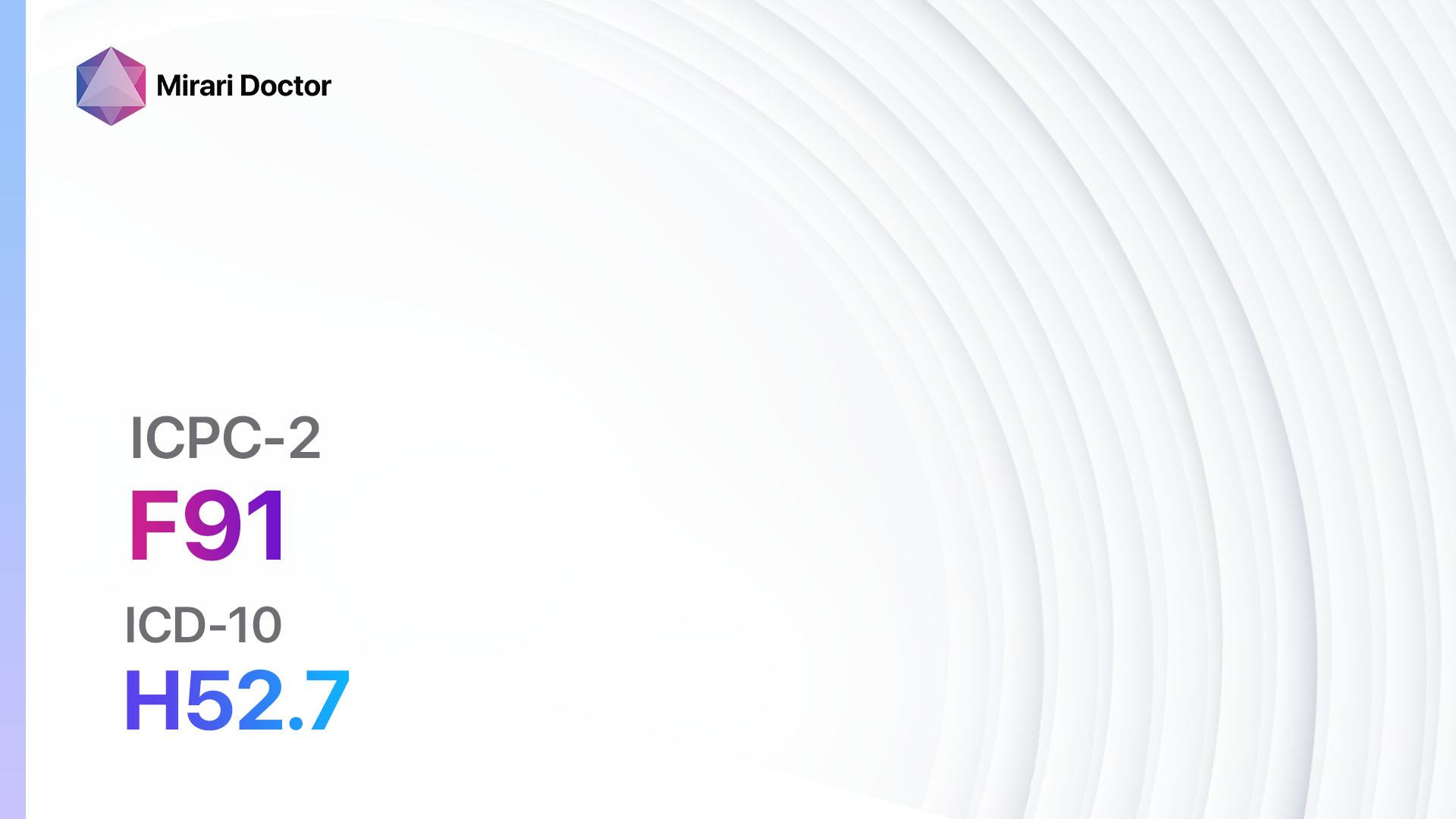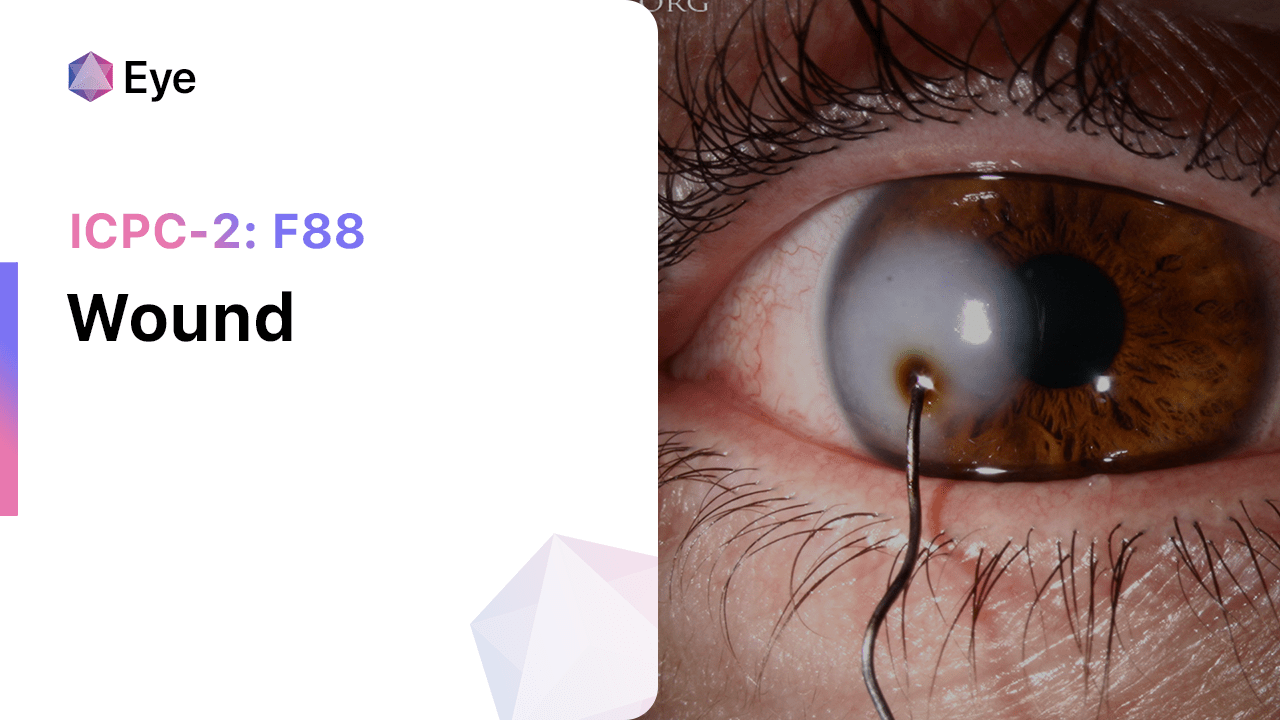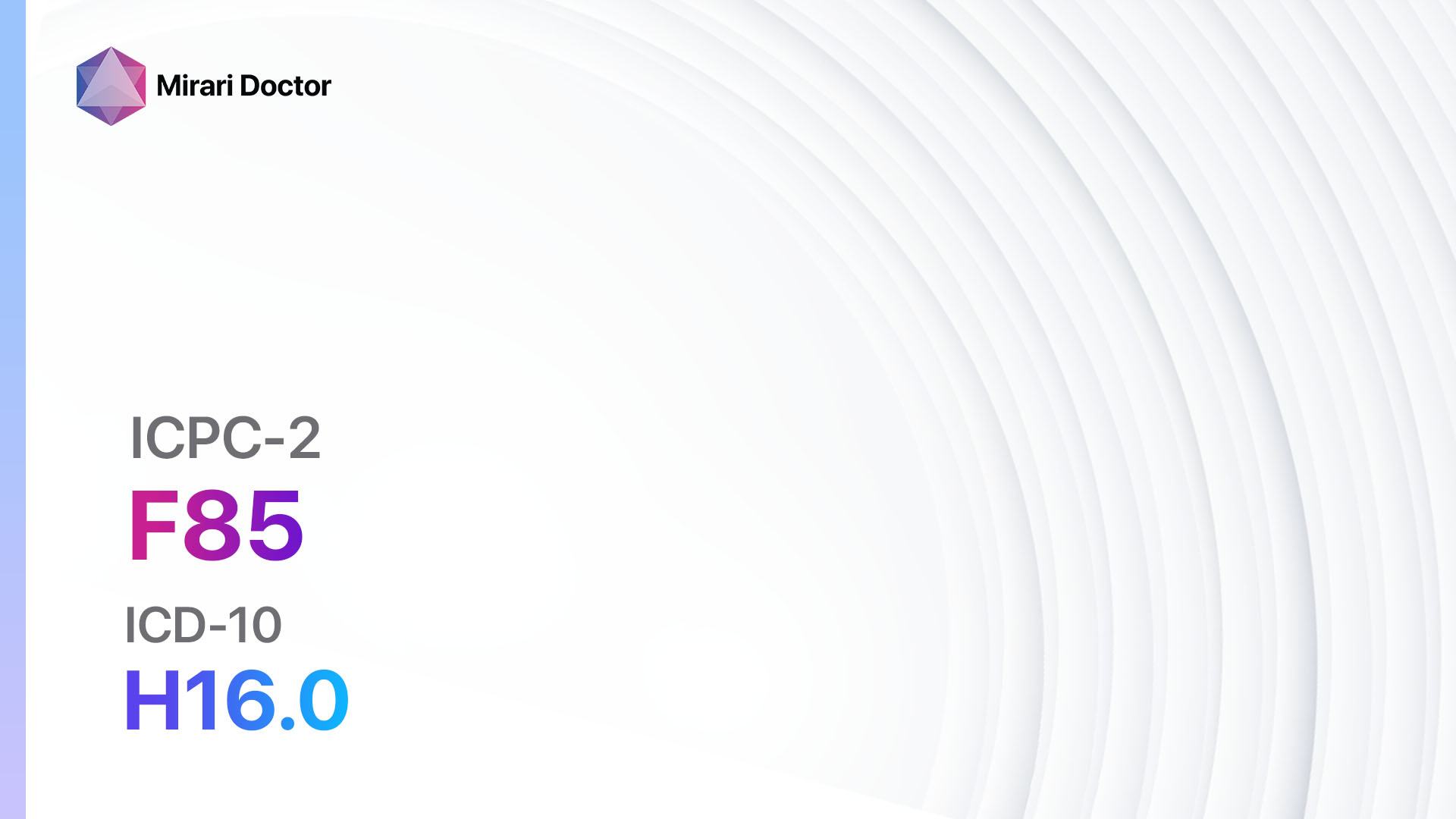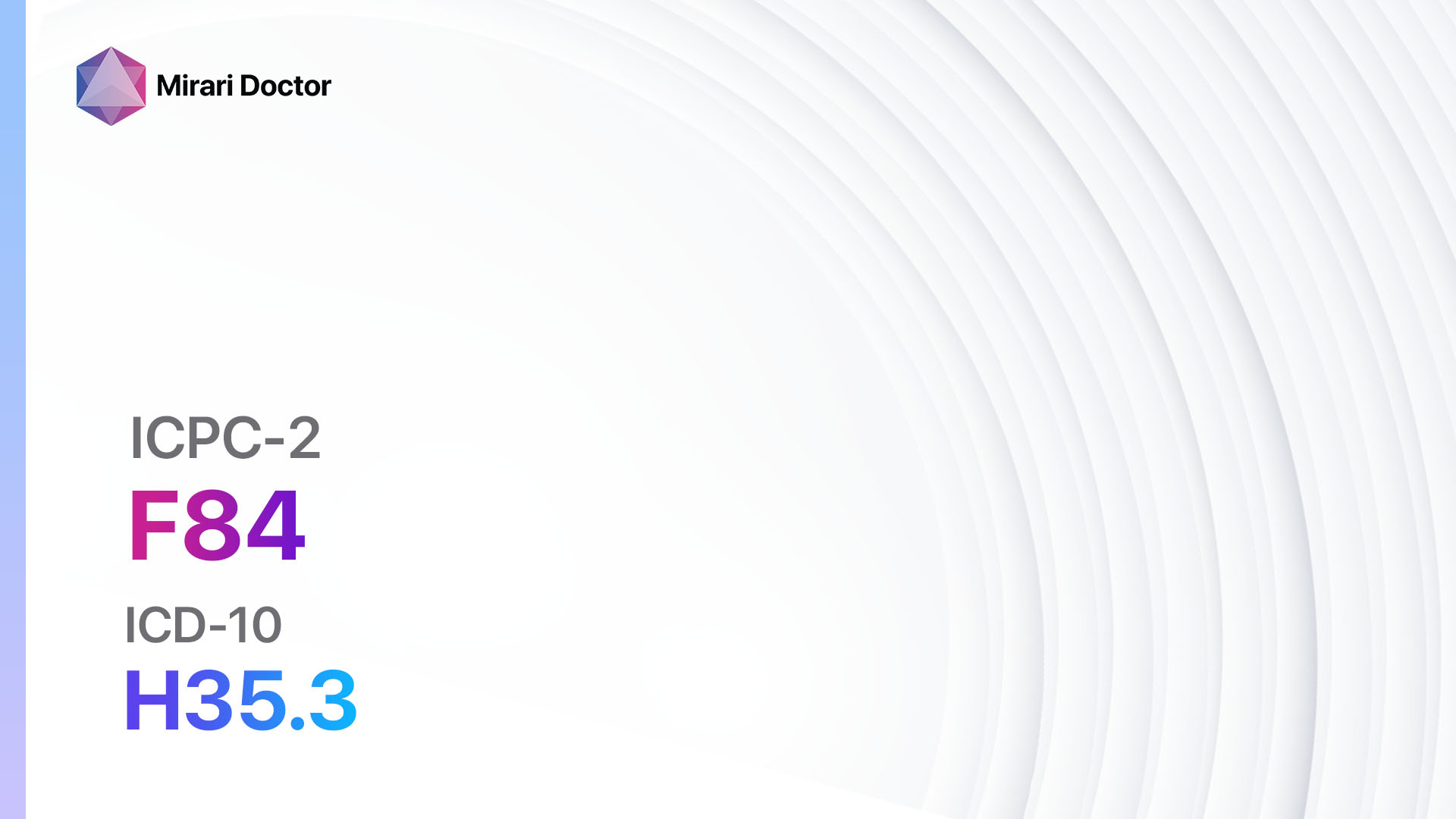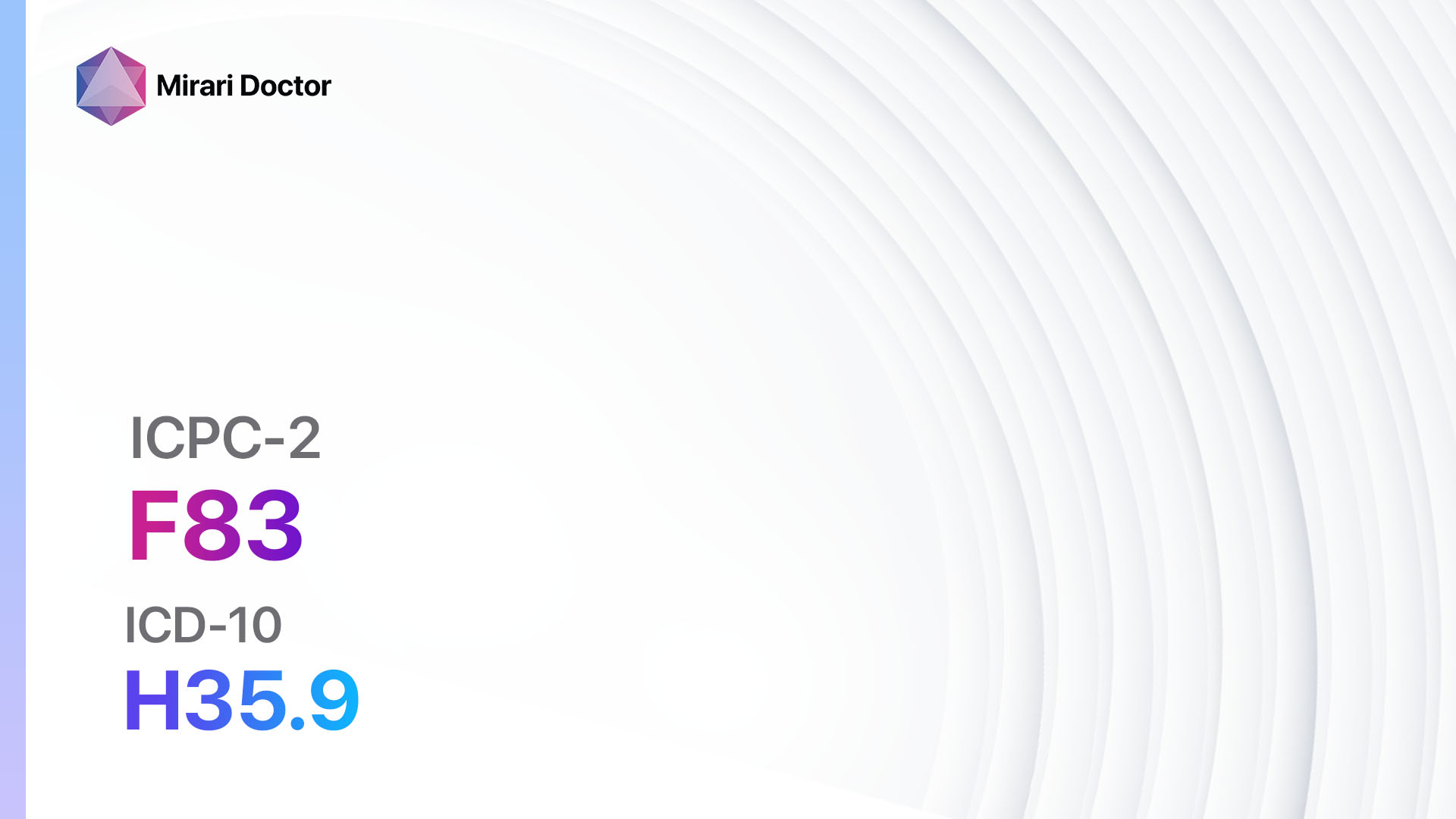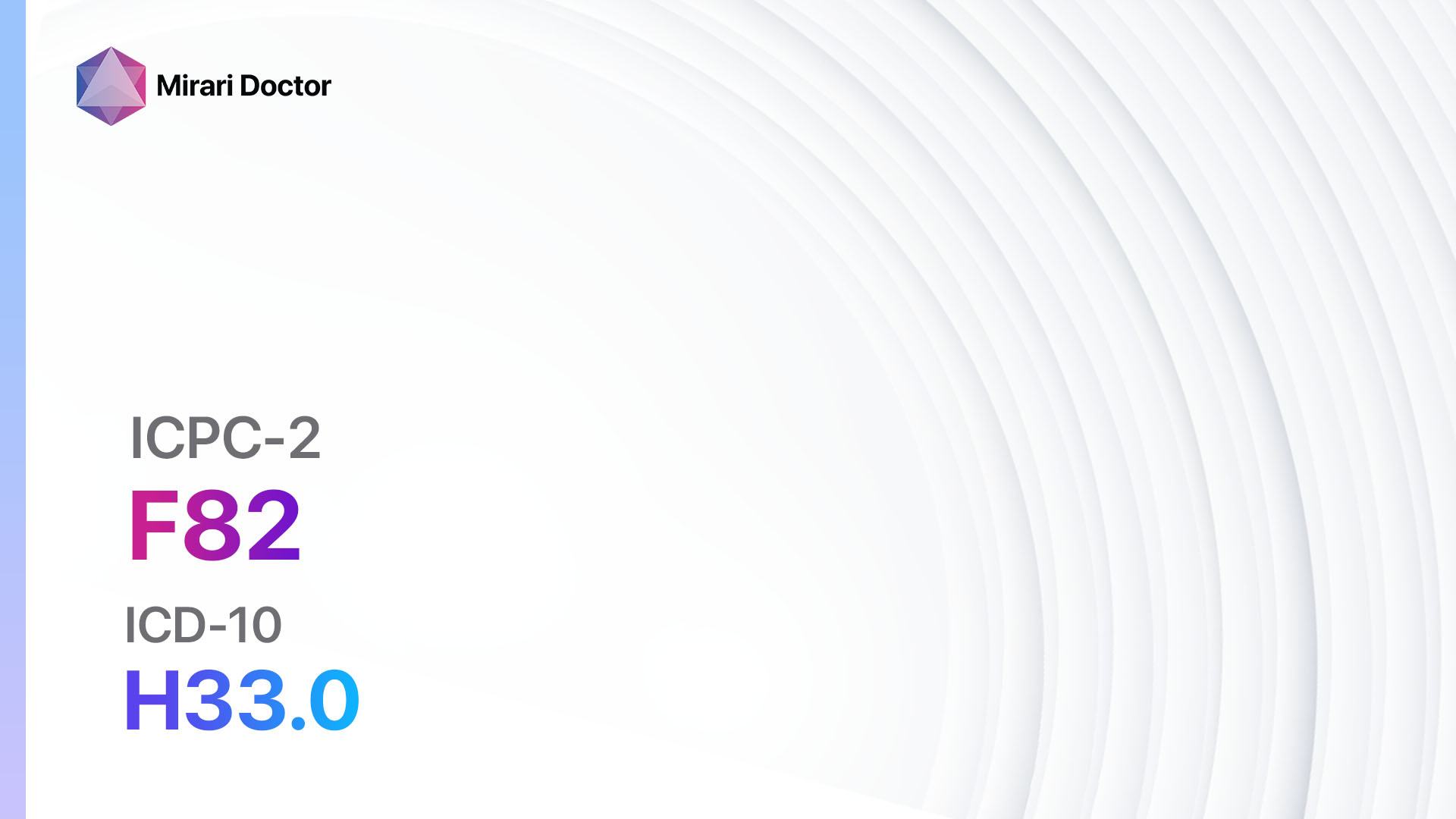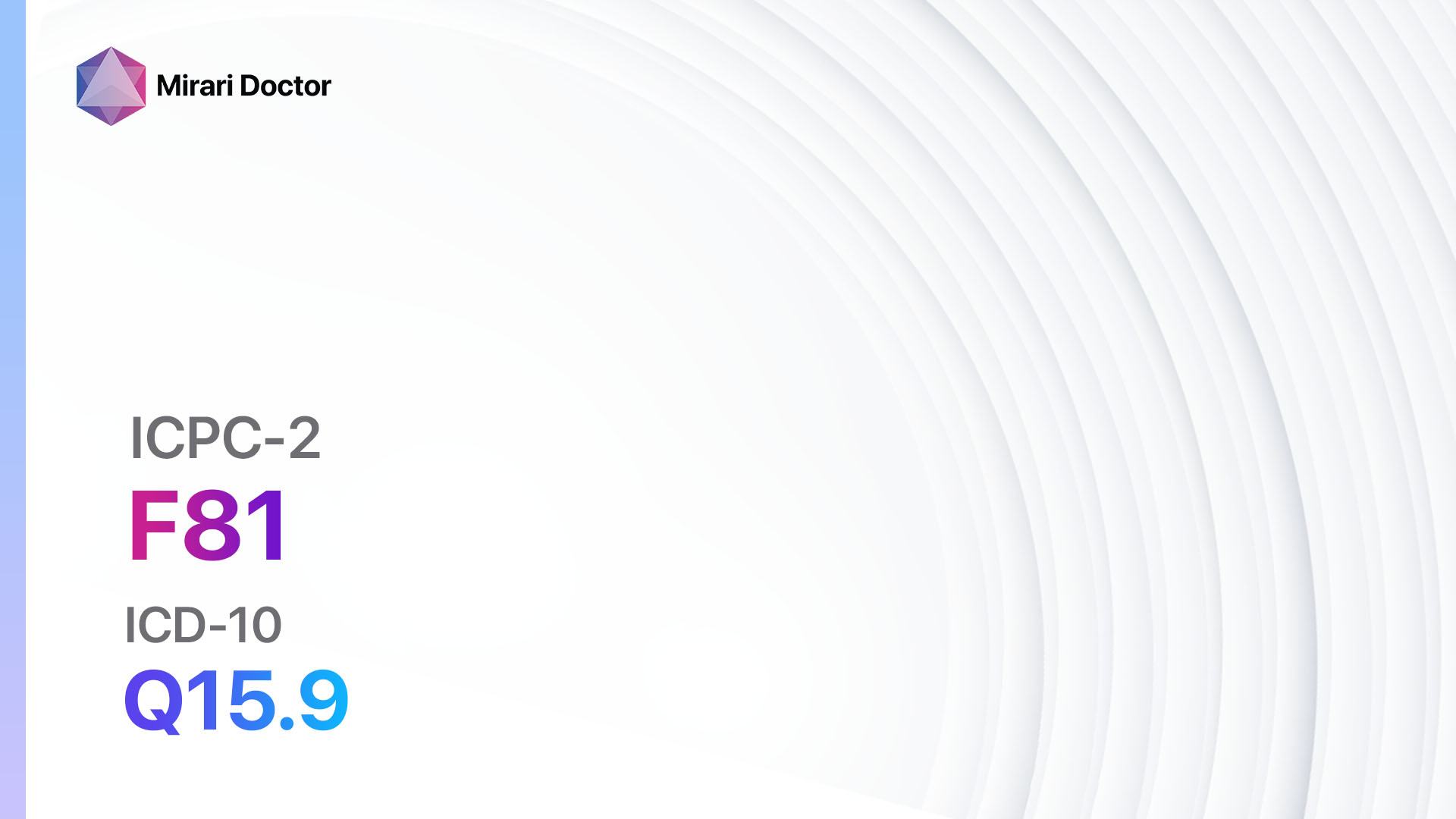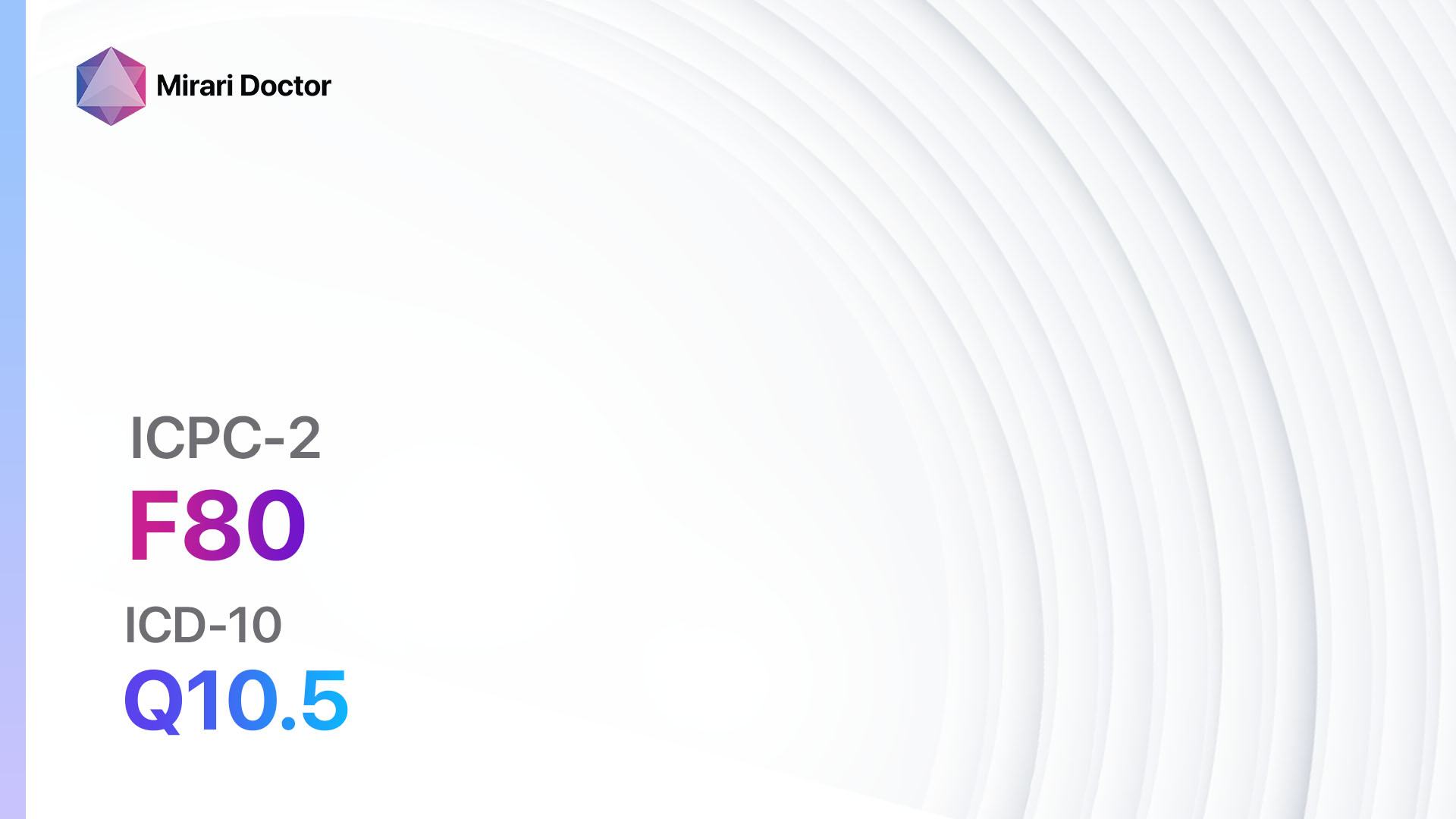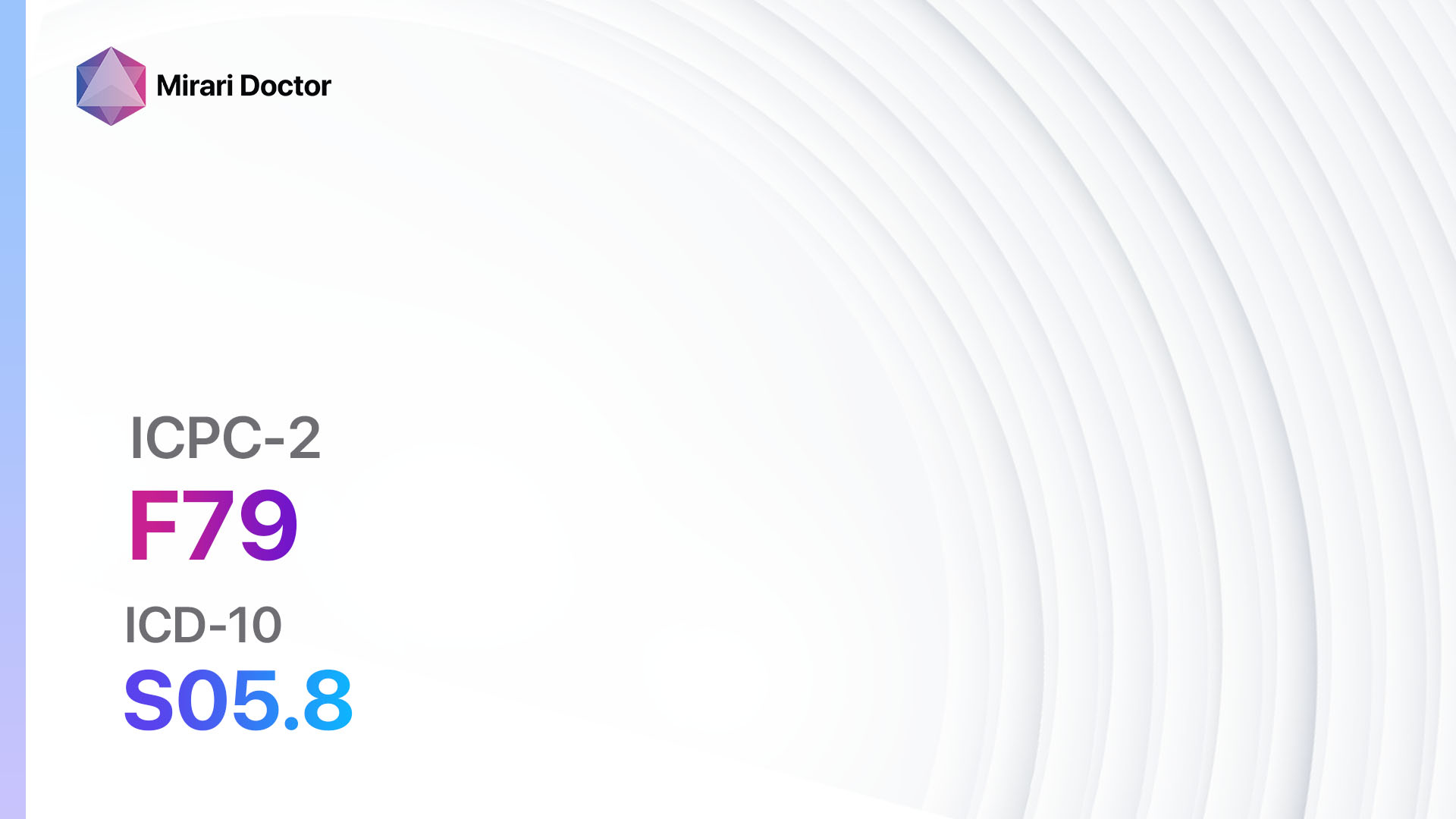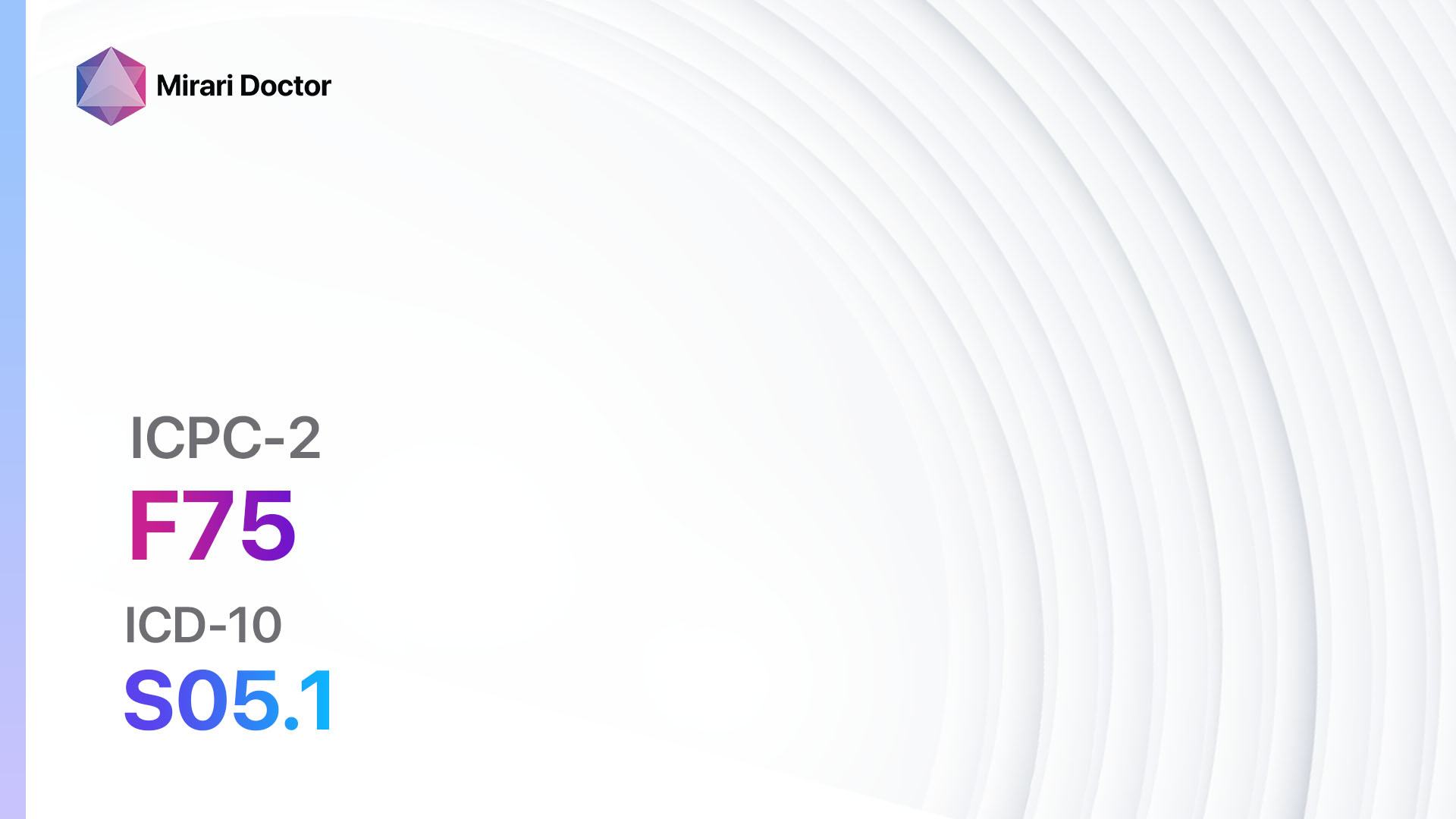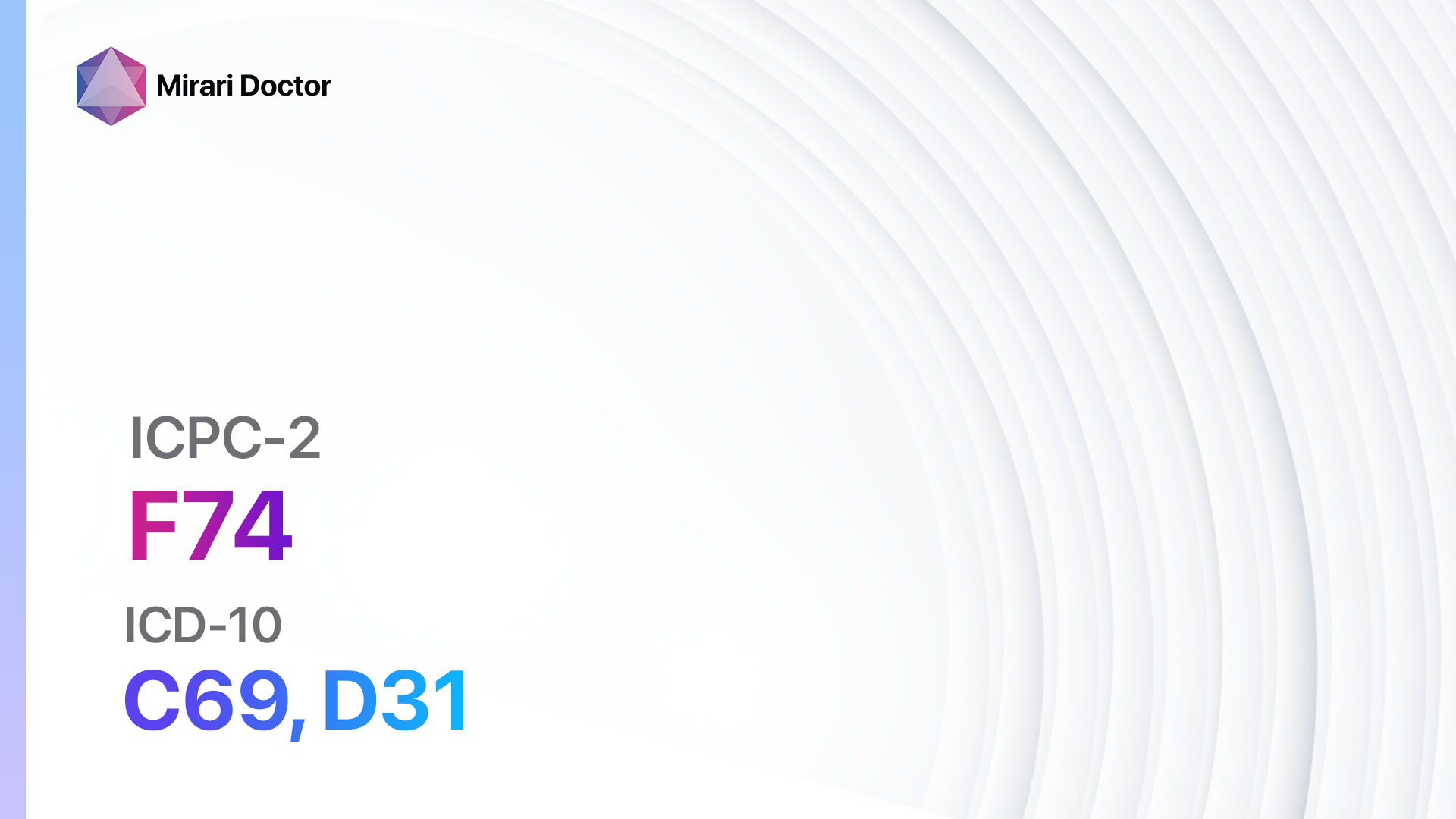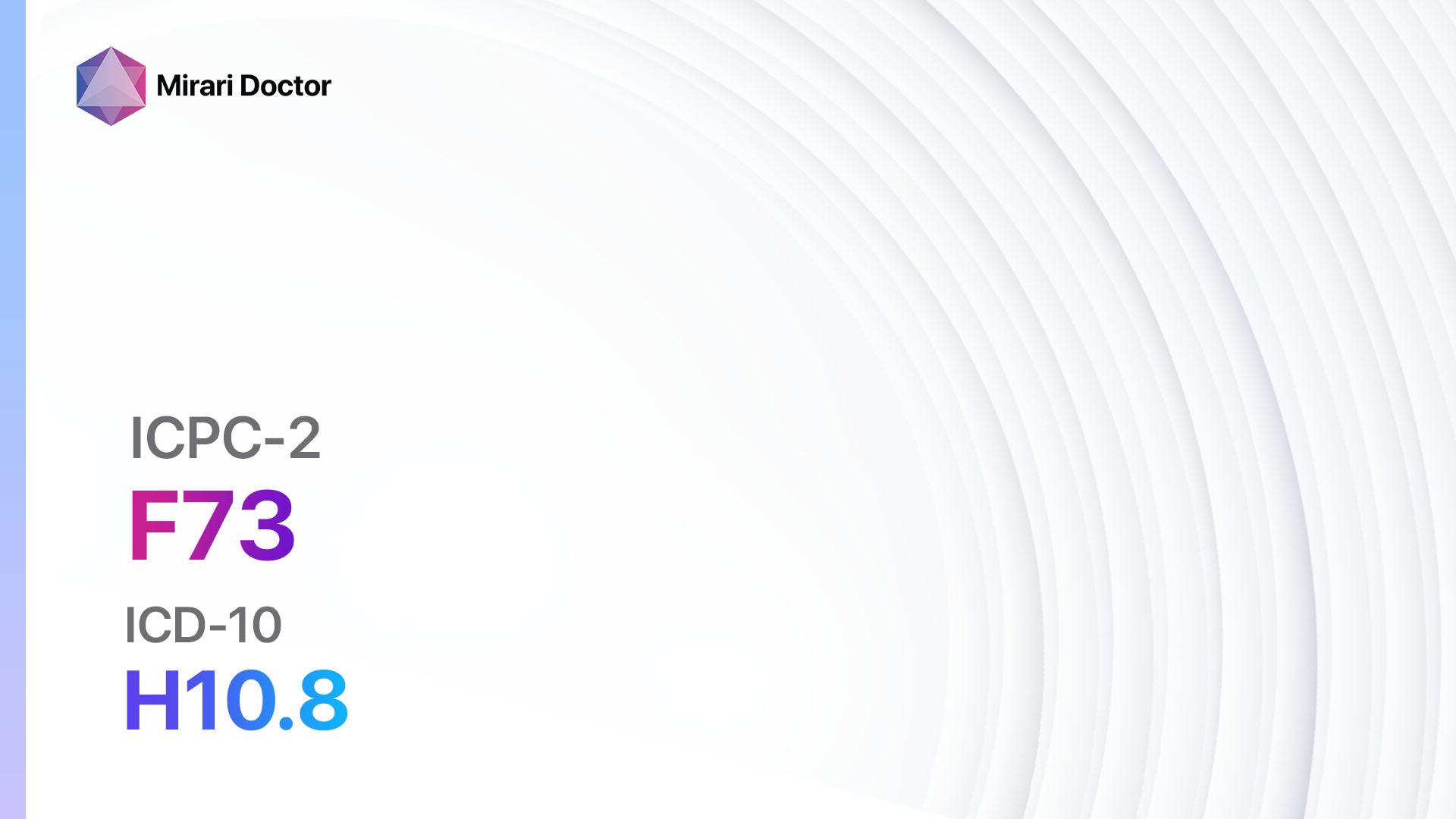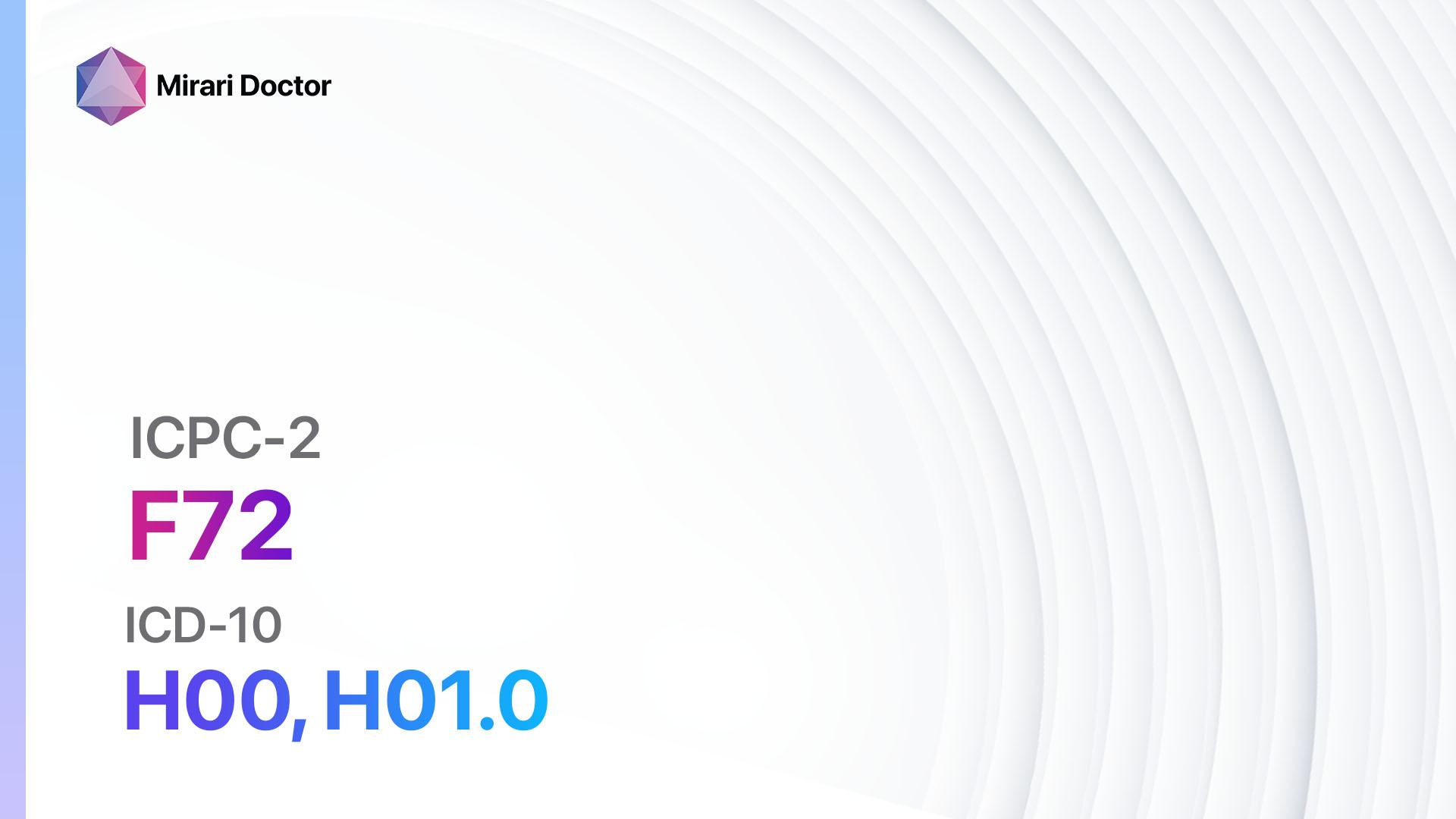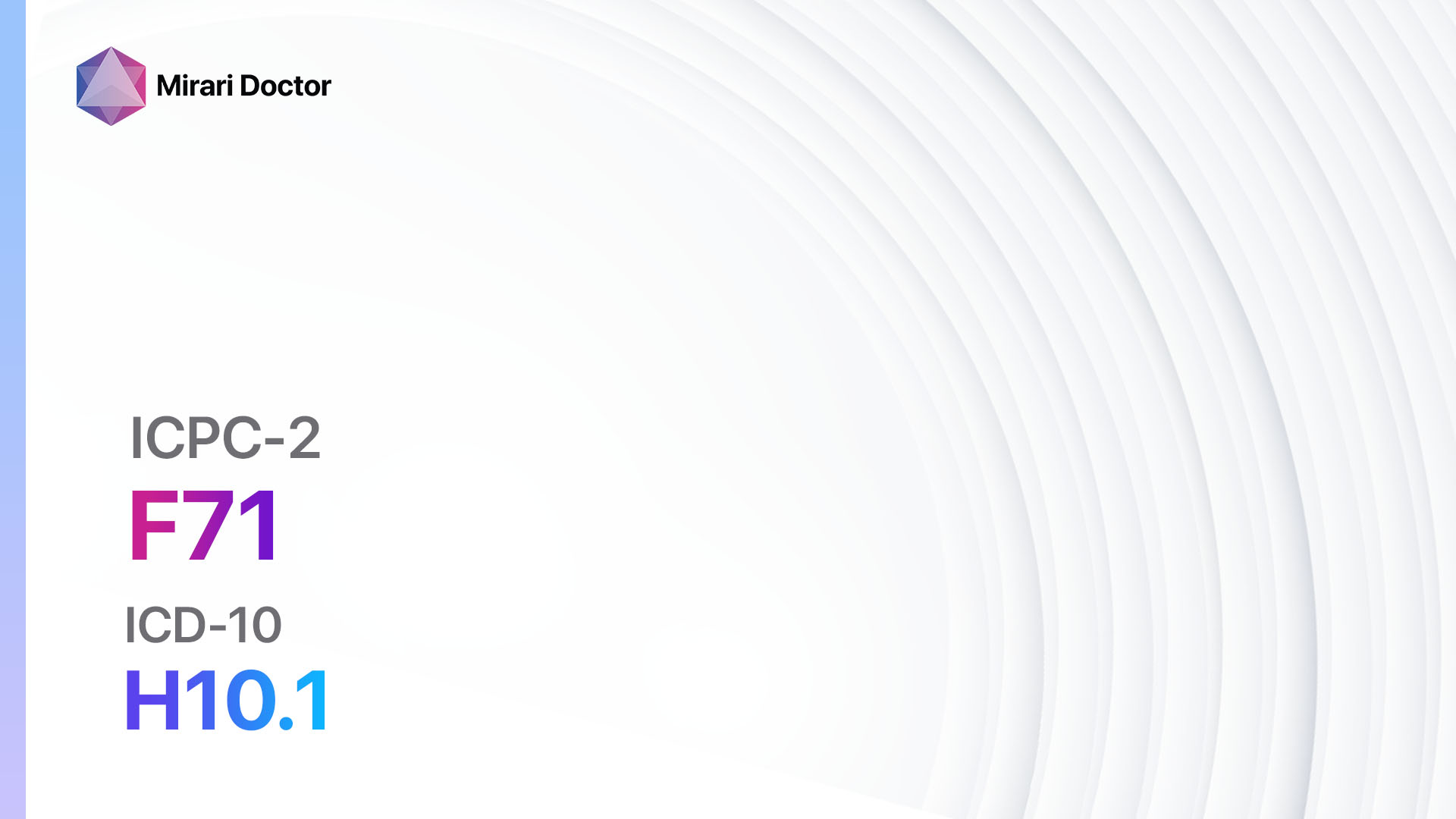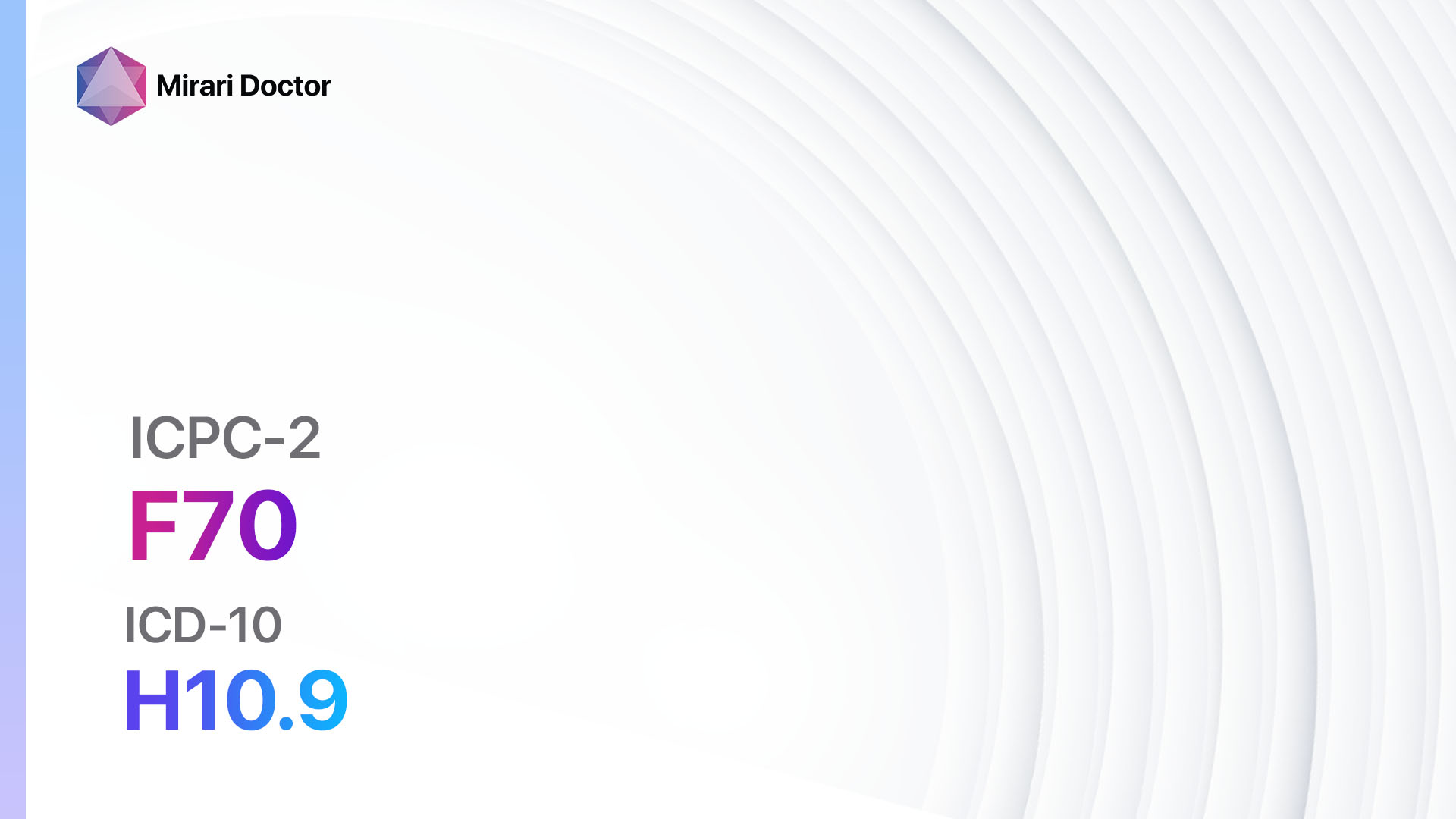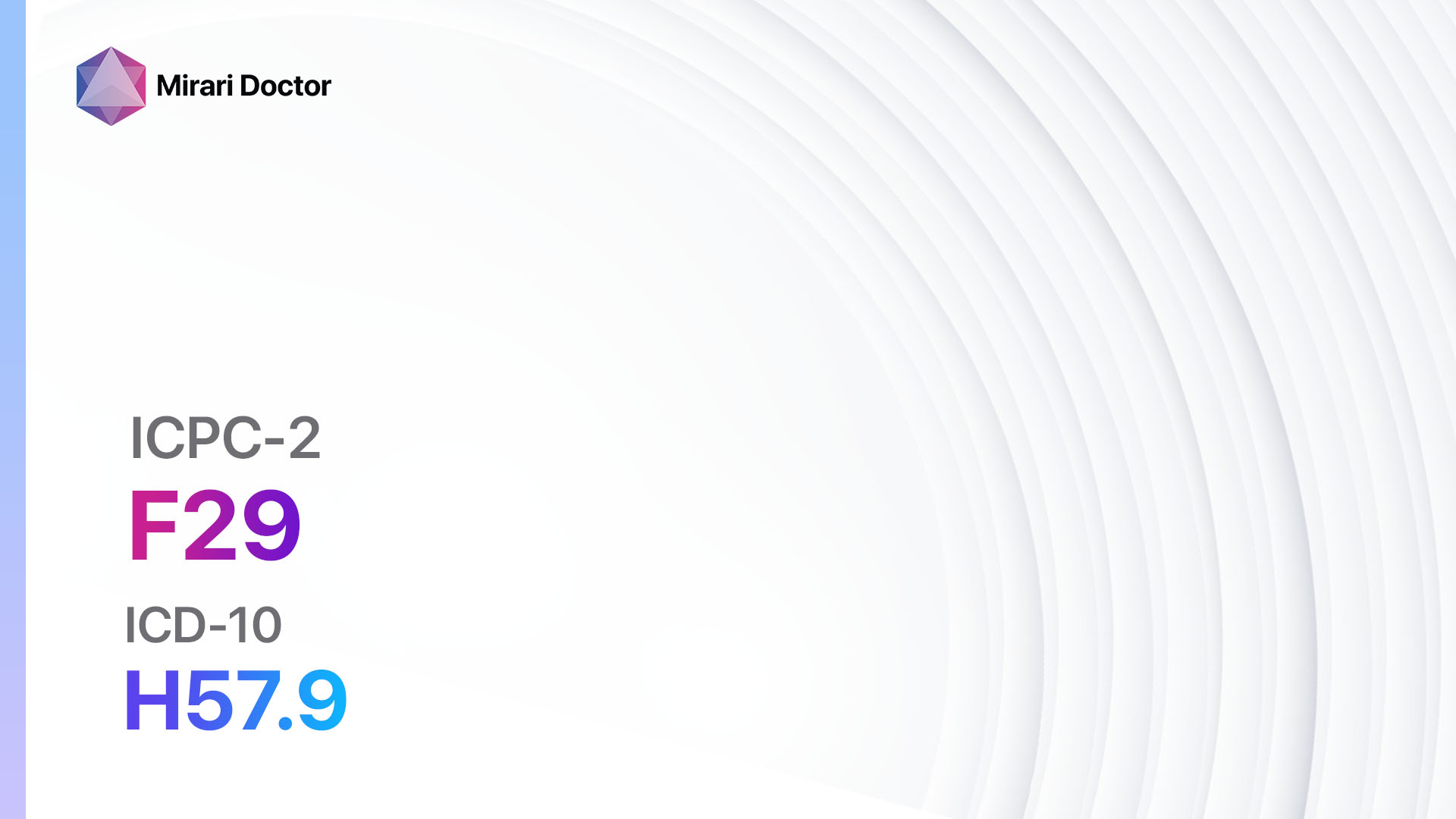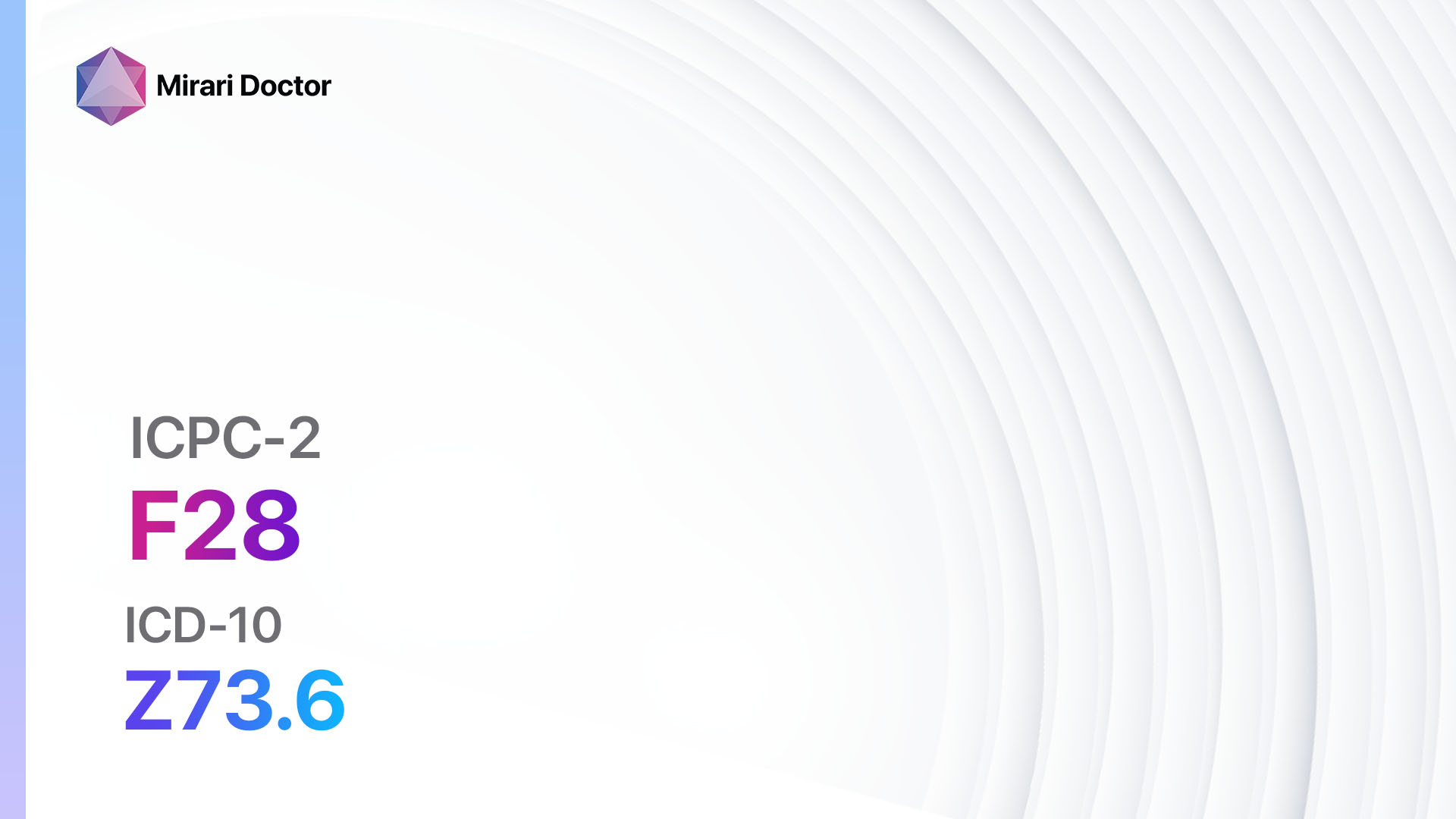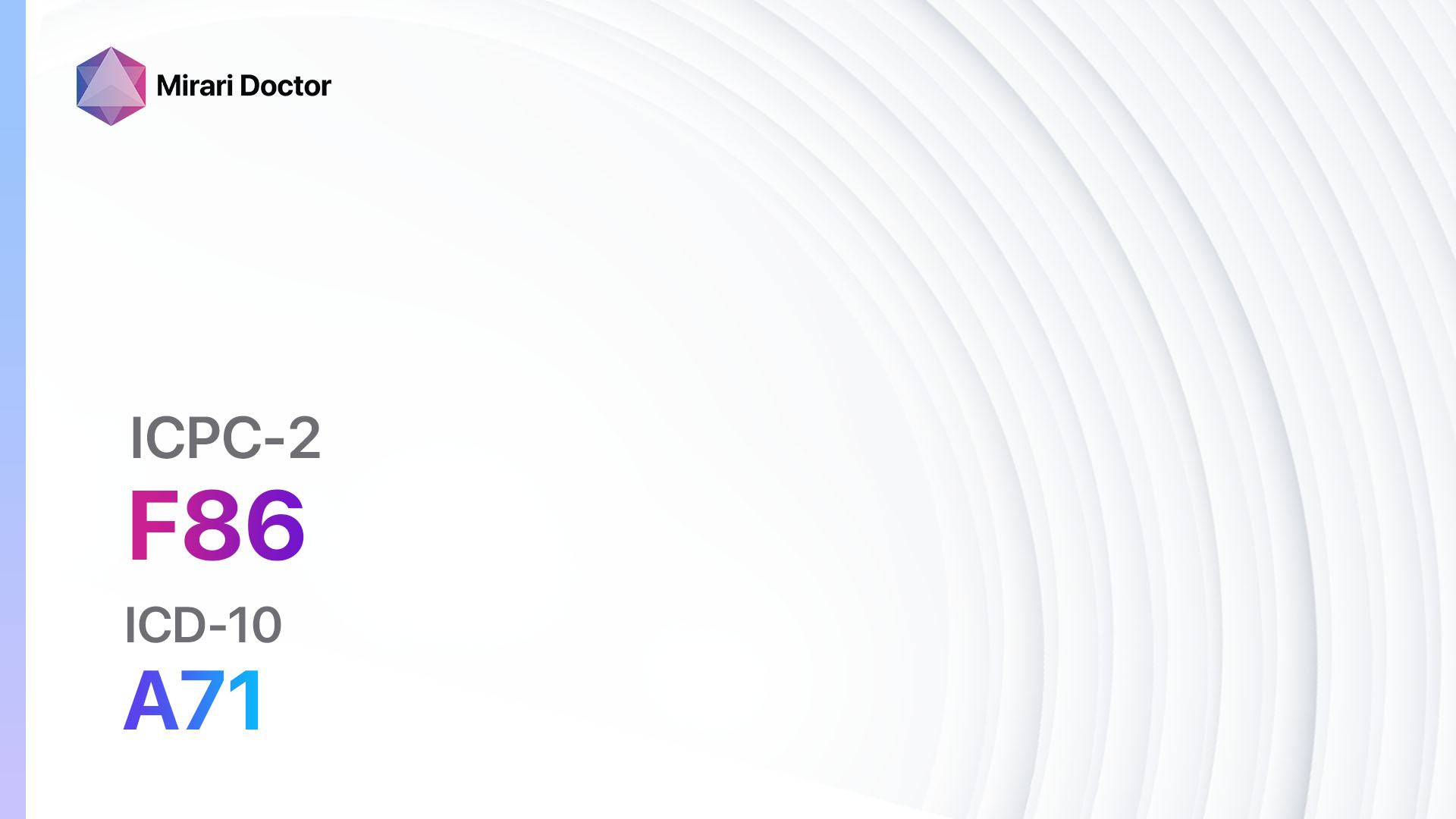
Introduction
Trachoma is a contagious bacterial infection that affects the eyes, specifically the conjunctiva and cornea. It is caused by the bacterium Chlamydia trachomatis and is a leading cause of preventable blindness worldwide[1][2]. The aim of this guide is to provide healthcare professionals with a comprehensive overview of trachoma, including its symptoms, causes, diagnostic steps, possible interventions, and patient education.
Codes
Symptoms
- Eye redness: The conjunctiva becomes inflamed and appears red[3].
- Eye discharge: A thick, white or yellow discharge may be present[3].
- Eyelid swelling: The eyelids may become swollen and tender[4].
- Sensation of a foreign body in the eye: Patients may experience a gritty or sandy feeling in the eye[5].
- Blurred vision: Vision may be temporarily impaired due to the inflammation and discharge[6]
Causes
- Chlamydia trachomatis infection: Trachoma is caused by the bacterium Chlamydia trachomatis, which is transmitted through direct contact with infected eye or nose secretions[1][7].
- Poor hygiene: Lack of access to clean water and sanitation facilities can contribute to the spread of trachoma[8].
- Crowded living conditions: Trachoma is more common in areas with overcrowded living conditions, where close contact with infected individuals is more likely[9].
Diagnostic Steps
Medical History
- Gather information about the patient’s symptoms, including eye redness, discharge, and swelling.
- Ask about any recent exposure to individuals with trachoma.
- Inquire about the patient’s living conditions and access to clean water and sanitation facilities.
Physical Examination
- Inspect the eyes for signs of conjunctival inflammation, discharge, and eyelid swelling[3][4].
- Evaluate visual acuity to assess any impairment[6].
- Palpate the lymph nodes around the neck to check for enlargement, which may indicate a more advanced stage of trachoma[10].
Laboratory Tests
- Conjunctival swab: Collect a sample from the conjunctiva to test for the presence of Chlamydia trachomatis using nucleic acid amplification tests (NAATs).
- Blood tests: In some cases, blood tests may be performed to rule out other causes of eye inflammation and to assess the patient’s overall health.
Diagnostic Imaging
- Diagnostic imaging is not typically used in the diagnosis of trachoma.
Other Tests
- None
Follow-up and Patient Education
- Schedule follow-up appointments to monitor the patient’s response to treatment.
- Educate the patient about the importance of good hygiene practices, including handwashing and face washing.
- Emphasize the need for clean water and sanitation facilities to prevent the spread of trachoma[8].
- Provide information about the importance of completing the full course of prescribed medications.
Possible Interventions
Traditional Interventions
Medications:
Top 5 drugs for Trachoma:
- Azithromycin:
- Cost: $10-$50 for a course of treatment.
- Contraindications: Hypersensitivity to macrolide antibiotics.
- Side effects: Nausea, vomiting, diarrhea.
- Severe side effects: Rare, but may include liver toxicity and allergic reactions.
- Drug interactions: None of clinical significance.
- Warning: Azithromycin should not be used in patients with severe liver disease.
- Tetracycline eye ointment:
- Cost: $5-$20 per tube.
- Contraindications: Hypersensitivity to tetracycline antibiotics.
- Side effects: Eye irritation, blurred vision.
- Severe side effects: Rare, but may include severe allergic reactions.
- Drug interactions: None of clinical significance.
- Warning: Tetracycline eye ointment should not be used in children under 8 years of age.
- Erythromycin eye ointment:
- Cost: $5-$20 per tube.
- Contraindications: Hypersensitivity to macrolide antibiotics.
- Side effects: Eye irritation, blurred vision.
- Severe side effects: Rare, but may include severe allergic reactions.
- Drug interactions: None of clinical significance.
- Warning: Erythromycin eye ointment should not be used in patients with liver disease.
- Fusidic acid eye drops:
- Cost: $10-$30 per bottle.
- Contraindications: Hypersensitivity to fusidic acid.
- Side effects: Eye irritation, burning sensation.
- Severe side effects: Rare, but may include severe allergic reactions.
- Drug interactions: None of clinical significance.
- Warning: Fusidic acid eye drops should not be used in patients with fungal eye infections.
- Sulfamethoxazole/trimethoprim:
- Cost: $10-$30 for a course of treatment.
- Contraindications: Hypersensitivity to sulfonamide antibiotics.
- Side effects: Nausea, vomiting, diarrhea.
- Severe side effects: Rare, but may include severe allergic reactions and blood disorders.
- Drug interactions: Warfarin, phenytoin, methotrexate.
- Warning: Sulfamethoxazole/trimethoprim should be used with caution in patients with kidney or liver disease.
Alternative Drugs:
- Doxycycline: An alternative to tetracycline eye ointment for patients who cannot tolerate ointment application.
- Chloramphenicol eye drops: An alternative to fusidic acid eye drops for patients who cannot tolerate fusidic acid.
Surgical Procedures:
- Surgery is not typically indicated for the treatment of trachoma.
Alternative Interventions
- Warm compresses: Applying warm compresses to the eyes can help relieve symptoms and promote healing. Cost: Free.
- Eyelid hygiene: Regularly cleaning the eyelids with a gentle cleanser can help remove discharge and prevent reinfection. Cost: Varies depending on the cleanser used.
- Environmental improvements: Improving access to clean water and sanitation facilities can help prevent the spread of trachoma. Cost: Varies depending on the scope of the improvements.
- Health education programs: Educating communities about trachoma prevention and treatment can help reduce the burden of the disease. Cost: Varies depending on the resources allocated to the programs.
Lifestyle Interventions
- Good hygiene practices: Encouraging individuals to wash their hands and faces regularly can help prevent the spread of trachoma. Cost: Free.
- Environmental sanitation: Improving sanitation facilities and promoting proper waste management can reduce the risk of trachoma transmission. Cost: Varies depending on the scope of the improvements.
- Access to clean water: Ensuring access to clean water for personal hygiene can help prevent trachoma. Cost: Varies depending on the availability of clean water sources.
It is important to note that the cost ranges provided are approximate and may vary depending on the location and availability of the interventions.
Mirari Cold Plasma Alternative Intervention
Understanding Mirari Cold Plasma
- Safe and Non-Invasive Treatment: Mirari Cold Plasma is a safe and non-invasive treatment option for various skin conditions. It does not require incisions, minimizing the risk of scarring, bleeding, or tissue damage.
- Efficient Extraction of Foreign Bodies: Mirari Cold Plasma facilitates the removal of foreign bodies from the skin by degrading and dissociating organic matter, allowing easier access and extraction.
- Pain Reduction and Comfort: Mirari Cold Plasma has a local analgesic effect, providing pain relief during the treatment, making it more comfortable for the patient.
- Reduced Risk of Infection: Mirari Cold Plasma has antimicrobial properties, effectively killing bacteria and reducing the risk of infection.
- Accelerated Healing and Minimal Scarring: Mirari Cold Plasma stimulates wound healing and tissue regeneration, reducing healing time and minimizing the formation of scars.
Mirari Cold Plasma Prescription
Video instructions for using Mirari Cold Plasma Device – F86 Trachoma (ICD-10:A71)
| Mild | Moderate | Severe |
| Mode setting: 1 (Infection) Location: 7 (Neuro system & ENT) Morning: 15 minutes, Evening: 15 minutes |
Mode setting: 1 (Infection) Location: 7 (Neuro system & ENT) Morning: 30 minutes, Lunch: 30 minutes, Evening: 30 minutes |
Mode setting: 1 (Infection) Location: 7 (Neuro system & ENT) Morning: 30 minutes, Lunch: 30 minutes, Evening: 30 minutes |
| Mode setting: 2 (Wound Healing) Location: 7 (Neuro system & ENT) Morning: 15 minutes, Evening: 15 minutes |
Mode setting: 2 (Wound Healing) Location: 7 (Neuro system & ENT) Morning: 30 minutes, Lunch: 30 minutes, Evening: 30 minutes |
Mode setting: 2 (Wound Healing) Location: 7 (Neuro system & ENT) Morning: 30 minutes, Lunch: 30 minutes, Evening: 30 minutes |
| Mode setting: 3 (Antiviral Therapy) Location: 7 (Neuro system & ENT) Morning: 15 minutes, Evening: 15 minutes |
Mode setting: 3 (Antiviral Therapy) Location: 7 (Neuro system & ENT) Morning: 30 minutes, Lunch: 30 minutes, Evening: 30 minutes |
Mode setting: 3 (Antiviral Therapy) Location: 7 (Neuro system & ENT) Morning: 30 minutes, Lunch: 30 minutes, Evening: 30 minutes |
| Total Morning: 45 minutes approx. $7.50 USD, Evening: 45 minutes approx. $7.50 USD |
Total Morning: 90 minutes approx. $15 USD, Lunch: 90 minutes approx. $15 USD, Evening: 90 minutes approx. $15 USD, |
Total Morning: 90 minutes approx. $15 USD, Lunch: 90 minutes approx. $15 USD, Evening: 90 minutes approx. $15 USD, |
| Usual treatment for 7-60 days approx. $105 USD – $900 USD | Usual treatment for 6-8 weeks approx. $1,890 USD – $2,520 USD |
Usual treatment for 3-6 months approx. $4,050 USD – $8,100 USD
|
 |
|
Use the Mirari Cold Plasma device to treat Trachoma effectively.
WARNING: MIRARI COLD PLASMA IS DESIGNED FOR THE HUMAN BODY WITHOUT ANY ARTIFICIAL OR THIRD PARTY PRODUCTS. USE OF OTHER PRODUCTS IN COMBINATION WITH MIRARI COLD PLASMA MAY CAUSE UNPREDICTABLE EFFECTS, HARM OR INJURY. PLEASE CONSULT A MEDICAL PROFESSIONAL BEFORE COMBINING ANY OTHER PRODUCTS WITH USE OF MIRARI.
Step 1: Cleanse the Skin
- Start by cleaning the affected area of the skin with a gentle cleanser or mild soap and water. Gently pat the area dry with a clean towel.
Step 2: Prepare the Mirari Cold Plasma device
- Ensure that the Mirari Cold Plasma device is fully charged or has fresh batteries as per the manufacturer’s instructions. Make sure the device is clean and in good working condition.
- Switch on the Mirari device using the power button or by following the specific instructions provided with the device.
- Some Mirari devices may have adjustable settings for intensity or treatment duration. Follow the manufacturer’s instructions to select the appropriate settings based on your needs and the recommended guidelines.
Step 3: Apply the Device
- Place the Mirari device in direct contact with the affected area of the skin. Gently glide or hold the device over the skin surface, ensuring even coverage of the area experiencing.
- Slowly move the Mirari device in a circular motion or follow a specific pattern as indicated in the user manual. This helps ensure thorough treatment coverage.
Step 4: Monitor and Assess:
- Keep track of your progress and evaluate the effectiveness of the Mirari device in managing your Trachoma. If you have any concerns or notice any adverse reactions, consult with your health care professional.
Note
This guide is for informational purposes only and should not replace the advice of a medical professional. Always consult with your healthcare provider or a qualified medical professional for personal advice, diagnosis, or treatment. Do not solely rely on the information presented here for decisions about your health. Use of this information is at your own risk. The authors of this guide, nor any associated entities or platforms, are not responsible for any potential adverse effects or outcomes based on the content.
Mirari Cold Plasma System Disclaimer
- Purpose: The Mirari Cold Plasma System is a Class 2 medical device designed for use by trained healthcare professionals. It is registered for use in Thailand and Vietnam. It is not intended for use outside of these locations.
- Informational Use: The content and information provided with the device are for educational and informational purposes only. They are not a substitute for professional medical advice or care.
- Variable Outcomes: While the device is approved for specific uses, individual outcomes can differ. We do not assert or guarantee specific medical outcomes.
- Consultation: Prior to utilizing the device or making decisions based on its content, it is essential to consult with a Certified Mirari Tele-Therapist and your medical healthcare provider regarding specific protocols.
- Liability: By using this device, users are acknowledging and accepting all potential risks. Neither the manufacturer nor the distributor will be held accountable for any adverse reactions, injuries, or damages stemming from its use.
- Geographical Availability: This device has received approval for designated purposes by the Thai and Vietnam FDA. As of now, outside of Thailand and Vietnam, the Mirari Cold Plasma System is not available for purchase or use.
References
- Taylor, H. R., Burton, M. J., Haddad, D., West, S., & Wright, H. (2014). Trachoma. The Lancet, 384(9960), 2142-2152.
- World Health Organization. (2019). Trachoma. Retrieved from https://www.who.int/news-room/fact-sheets/detail/trachoma
- Bhosai, S. J., Bailey, R. L., Gaynor, B. D., & Lietman, T. M. (2012). Trachoma: an update on prevention, diagnosis, and treatment. Current opinion in ophthalmology, 23(4), 288-295.
- Hu, V. H., Harding-Esch, E. M., Burton, M. J., Bailey, R. L., Kadimpeul, J., & Mabey, D. C. (2010). Epidemiology and control of trachoma: systematic review. Tropical Medicine & International Health, 15(6), 673-691.
- Wright, H. R., Turner, A., & Taylor, H. R. (2008). Trachoma. The Lancet, 371(9628), 1945-1954.
- Wolle, M. A., Muñoz, B. E., Mkocha, H., & West, S. K. (2009). Constant ocular infection with Chlamydia trachomatis predicts risk of scarring in children in Tanzania. Ophthalmology, 116(2), 243-247.
- Gambhir, M., Basáñez, M. G., Burton, M. J., Solomon, A. W., Bailey, R. L., Holland, M. J., … & Grassly, N. C. (2009). The development of an age-structured model for trachoma transmission dynamics, pathogenesis and control. PLoS neglected tropical diseases, 3(6), e462.
- Stocks, M. E., Ogden, S., Haddad, D., Addiss, D. G., McGuire, C., & Freeman, M. C. (2014). Effect of water, sanitation, and hygiene on the prevention of trachoma: a systematic review and meta-analysis. PLoS medicine, 11(2), e1001605.
- Last, A. R., Burr, S. E., Weiss, H. A., Harding-Esch, E. M., Cassama, E., Nabicassa, M., … & Bailey, R. L. (2014). Risk factors for active trachoma and ocular Chlamydia trachomatis infection in treatment-naïve trachoma-hyperendemic communities of the Bijagós Archipelago, Guinea Bissau. PLoS neglected tropical diseases, 8(6), e2900.
- Solomon, A. W., Pavluck, A. L., Courtright, P., Aboe, A., Adamu, L., Alemayehu, W., … & Global Trachoma Mapping Project. (2015). The Global Trachoma Mapping Project: methodology of a 34-country population-based study. Ophthalmic epidemiology, 22(3), 214-225.
Related articles
Made in USA


